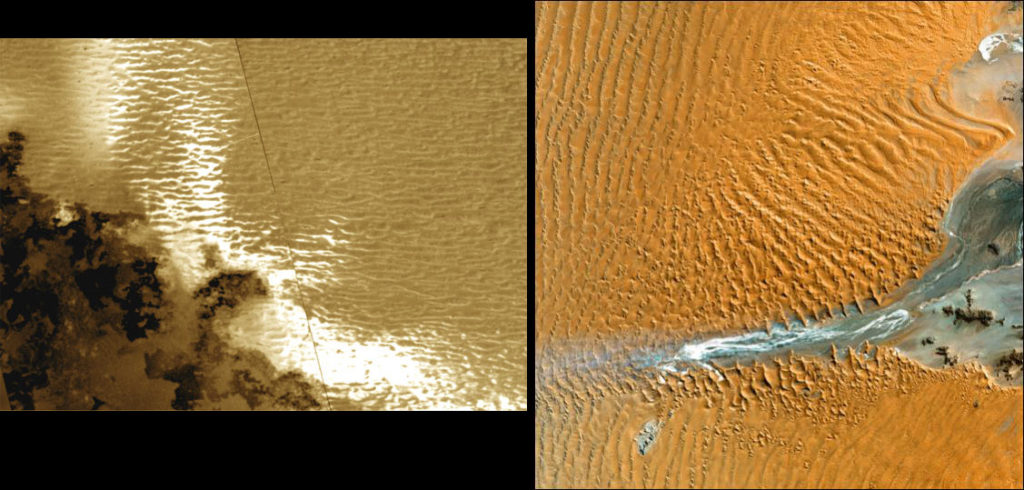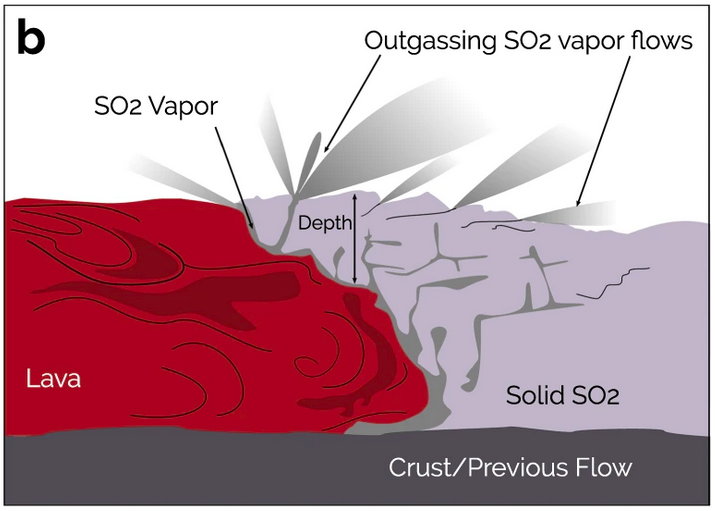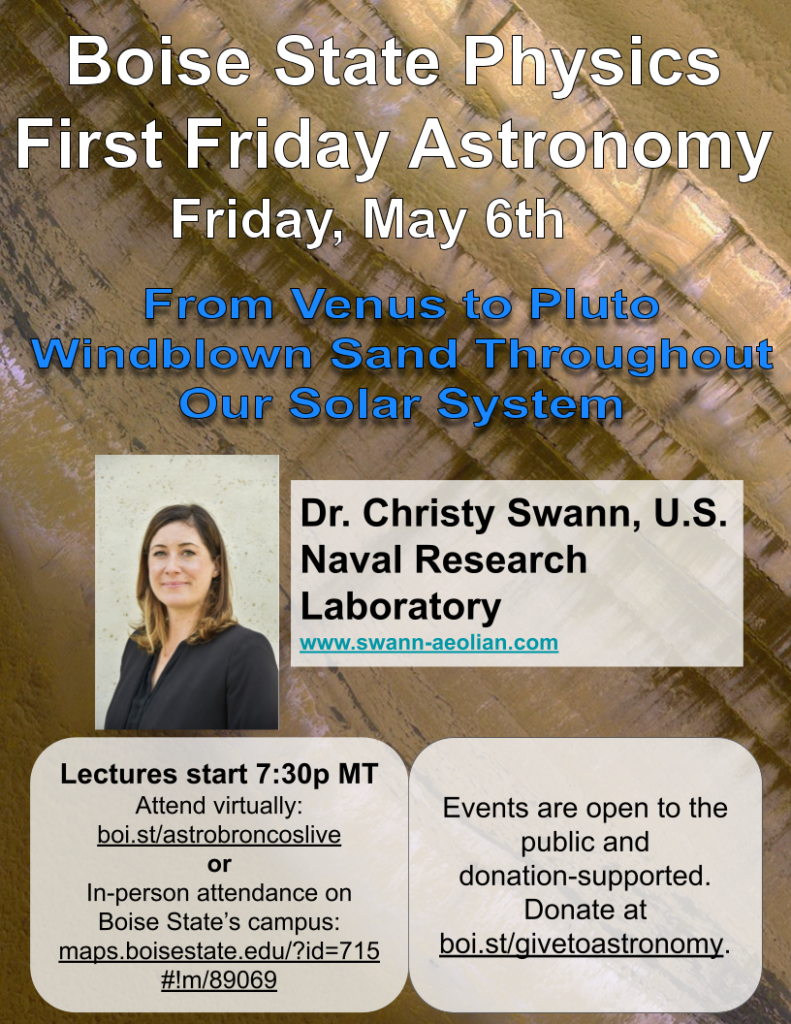Jupiter’s moon Io has long been famous for its sky-splitting volcanic eruptions, powered by Jupiter’s tidal gravity. But strange ridge-like features in regions adjacent to the volcanoes have raised questions since their discovery — What are they? How are they formed? Are they somehow related to the volcanoes? A recent study has argued that, even under Io’s whisper-thin atmosphere, these ridges are probably vast dune fields. This new discovery adds yet another world to our growing trove of worlds where aeolian processes operate.
Volcanoes in the Sky
It was 1979: “Rapper’s Delight” introduced the world to hip hop, the last emperor of Iran was forced to flee to Egypt, and the Voyager mission found active volcanoes on Jupiter’s moon Io.
Io had long stood as an outlier in the Jupiter system. Telescopic observations had shown that Io’s surface was rocky and not, like Jupiter’s other large moons, icy. Microwave measurements in the early 1970s showed Io still emitted a lot of heat even after it plunged into the cool darkness of Jupiter’s shadow.

The enigma of Io’s esoteric exterior and everlasting emissions began to resolve when NASA’s Voyager I spacecraft, launched in 1977, flew past. Voyager’s images revealed a smooth, pizza-colored surface and not covered in impact-generated craters like most solar system bodies. The final piece of the puzzle fell into place three days after the Jupiter flyby when navigation engineer Linda Morabito found a 300-kilometer (190 mi) tall cloud spilling off Io’s limb. Scientists quickly realized it was a volcanic plume.
Today, we know Io is covered in hundreds of active volcanoes powered by Jupiter’s vice-like gravity. The associated plumes quickly smooth out any impact craters with deep deposits of basalt, glazed with sulfur frost. And it’s this yellow and red sulfur frost that gives Io’s its cheesy appearance.
As it turns out, the sulfur frost may also explain the appearance of long mysterious ridges spanning the plains around many of Io’s volcanoes.
Dune World

(Right) Dunes in the Namibian sand sea from https://earthsky.org/space/dune-fields-on-titan-saturns-large-moon/.
Of course, the mysteries didn’t end with discovery of Io’s volcanism. Adjacent to many volcanoes appeared dense clusters of ridges that, for all the world, look like dune fields. In a recent study in Nature, George McDonald, a scientist at Rutgers, and colleagues conducted a detailed analysis of the shape of the Ionian ridges. They found their shapes exactly resemble dune fields on Earth and other worlds, with the same lengths and spacings.
Unlike the Earth (or Saturn’s moon Titan), though, Io doesn’t have a dense atmosphere. The only obvious source of gas, the volcanic plumes produce an atmosphere almost one billion times less dense than Earth’s. So without winds to blow, how could sand dunes grow?

Once again, Io’s ubiquitous sulfur frost held the answer. McDonald and colleagues found that, as it erupted, lava might intrude beneath the sulfur deposits, warming and melting the sulfur at the base. With the weight of the sulfur frost on top, gas pressures and densities comparable to Mars’ could build up, and the gaseous sulfur could eventually finally erupt and scour the surface to build up the dune fields. Instead of silicate sand grains as on Earth, the dunes on Io could be made of sulfur snow.
Winds Across the Solar System

Of course, Io is not alone in playing host to wind-driven (i.e., “aeolian”) landforms. Earth is, of course, replete with such features — the sand seas in Namibia, yardangs in China, vast fields of fertile loess in northern Idaho.
Mars also features a wide array of aeolian features, and the natures, locations, and compositions on aeolian features helps scientists piece together the story of Mars’ recent climate. For example, dunes in Gale Crater, the site of the Curiosity rover’s exploration, suggest that, although the region near Gale might have been wet at times in the past, the region must also have been quite arid since dunes generally form in arid environments.
Farther afield, Pluto also seems to have dune fields. During its flyby of the Pluto system, the New Horizons mission imaged vast swaths of Pluto’s surface and found regularly spaced ridges sprawled across flat plains. Unlike terrestrial or martian dunes, though, Pluto’s dunes are probably made of methane ices. Since Pluto’s atmosphere waxes and wanes as Pluto’s orbit takes it closer to and farther away from the Sun, it’s likely these dunes formed long ago. And so, like the martian dunes, we can probably use them to understand Pluto’s ancient climate.

And the grandmother of all sand seas, dunes wrap all the way around the equator of Saturn’s moon Titan. This vast province of sand spends a lot of its time stationary and unmoving as the Titan’s seasonally slack winds gently scrub the surface. So where is the wind to form the dunes? As Titan’s seasons shift from winter to summer, scientists believe the global wind patterns change dramatically, and storms in the mid-latitudes draw in enormous geysers of air, creating conditions at the equator that drive the winds. Direct evidence for storm-driven wind fields come from images of regional dust storms captured by the Cassini mission during its exploration of the Saturn system.
NASA’s Dragonfly mission to Titan, set to launch in 2027, will explore Titan’s dune fields, looking for signs of incipient biological chemistry. In the process, it will also reveal the processes that form and mold dunes across the solar system.
If you want to learn more about aeolian processes across the solar system, join us for Boise State Physics’ First Friday Astronomy event on May 6 at 7:30p when Dr. Christy Swann will discuss her experiments on Earth’s beaches and what they are telling us about sand and dust movements on other worlds.
